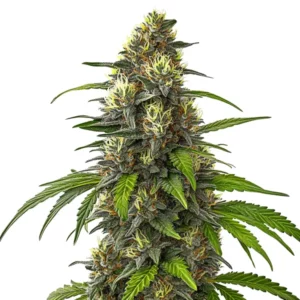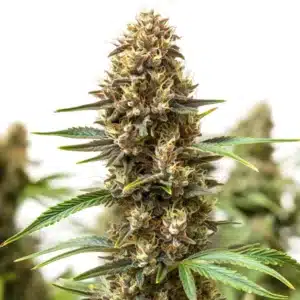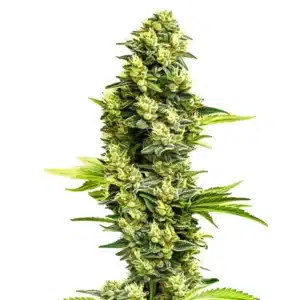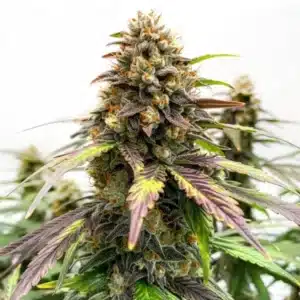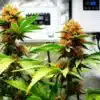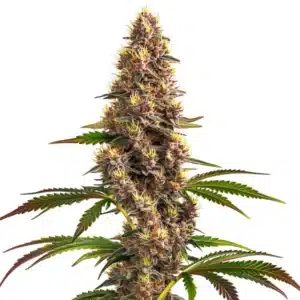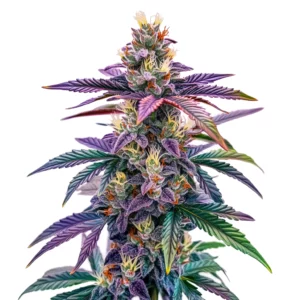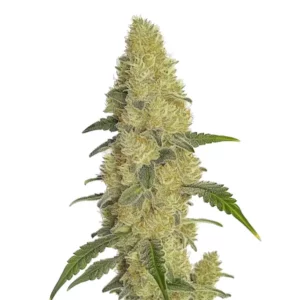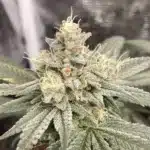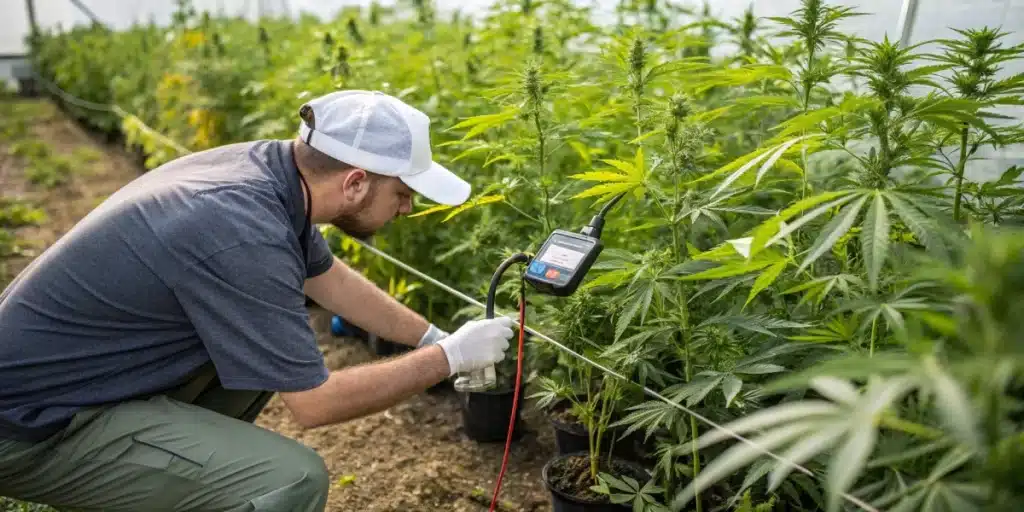
Best Nutrients for Outdoor Cannabis: Feeding for Maximum Yield
Achieving maximum yield from your outdoor garden starts with using the best nutrients for outdoor cannabis that your plants can absorb for robust growth. A well-fed cannabis plant not only produces high-quality buds but also supports overall plant health and stress resistance. With outdoor environments presenting unique challenges and opportunities, selecting the best outdoor cannabis nutrients is key for growers looking to elevate their harvests.
By embracing innovative feeding techniques and targeted nutrient formulas, growers have witnessed dramatic improvements in plant vitality and production. This guide provides a comprehensive look into feeding strategies, focusing on the best dry cannabis nutrients and the best nutrients for outdoor cannabis to help your garden thrive throughout every stage of development.
Recommended Strains
Cafe Racer
|
|
THC | 25% (High) |
|
|
Type | Feminized |
|
|
Yield | Medium |
|
|
Phenotype | 30% Indica / 70% Sativa |
Cafe Racer Autoflower
|
|
THC | 19% - 24% (Medium) |
|
|
Type | Autoflowering |
|
|
Yield | High |
|
|
Phenotype | 50% Indica / 50% Sativa |
Essential Nutrients (N-P-K) Overview: Best Nutrients for Outdoor Cannabis
Outdoor growers must balance the three fundamental components – nitrogen (N), phosphorus (P), and potassium (K) – to supply the best nutrients for outdoor cannabis. These primary elements work in tandem to support photosynthesis, energy transfer, and overall cellular function. A healthy balance in the nutrient mix gives cannabis plants the stamina to resist pests and environmental stress while maximizing their potential yield.
The nutrient formula is carefully crafted so that the best outdoor cannabis nutrients work synergistically with additional micronutrients such as calcium, magnesium, and iron. This holistic feeding approach leads to robust root development and resilient foliage. Growers often combine organic and synthetic nutrient sources, ensuring that the feeding regimen supports both immediate growth and long-term soil health.
Key Nutrients Breakdown for Maximum Impact
Nitrogen fuels vigorous vegetative growth, while phosphorus is essential for energy production and bud formation. Potassium ensures overall plant stability and assists with water regulation. These key components form the backbone of the best nutrients for outdoor cannabis and are typically the focus of nutrient mixes during different growth phases.
Supplementing these primary nutrients with secondary minerals such as sulfur and magnesium further enhances the efficacy of the feeding regimen. By keeping the balance in check, growers can maintain the delicate equilibrium required for outdoor success.
Organic Versus Synthetic Options
Many growers debate whether organic or synthetic nutrients best suit their outdoor setups. Organic nutrients provide slow-release benefits, improve soil structure, and encourage beneficial microbial activity. Meanwhile, synthetic products offer precise control over the nutrient levels, ensuring that the best nutrients for outdoor cannabis are delivered in exact proportions when needed.
Practical experience shows that blending both types can yield impressive results, providing a steady nutrient supply while also enhancing soil fertility for future crops.
Promos & Deals
Nutrient Needs in Each Growth Stage: Best Nutrients for Outdoor Cannabis
Different stages of growth call for adjustments in the nutrient regimen to maintain the best nutrients for outdoor cannabis at every phase. Outdoor plants experience significant shifts in their requirements as they move from the seedling stage to flowering, making it essential to tailor the nutrient mix accordingly.
When selecting the best outdoor cannabis nutrients, growers must account for varying water retention, soil pH fluctuations, and seasonal changes. Early growth demands a focus on nitrogen-rich formulas to build strong, leafy structures, while flowering demands a boost in phosphorus and potassium to support bud expansion.
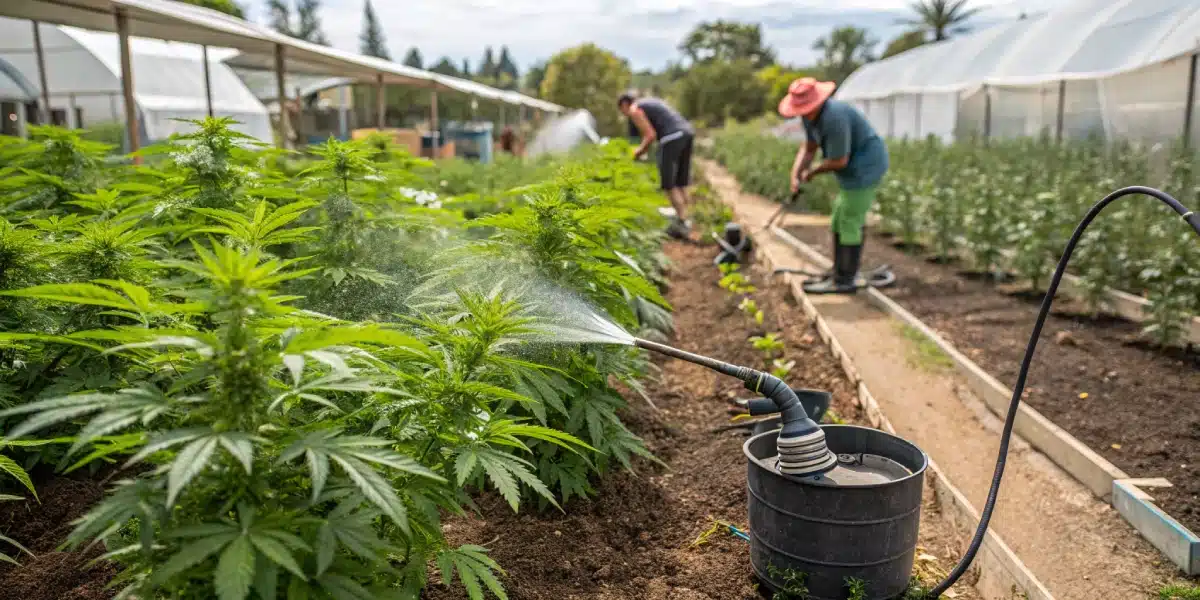
Seedling Phase Requirements
Young plants benefit from milder nutrient solutions that prevent nutrient burn while supporting initial growth. At this stage, a gentle feeding schedule that prioritizes light doses of nitrogen helps the best nutrients for outdoor cannabis establish a robust root system.
During the seedling phase, even slight overfeeding can lead to stress. A balanced, diluted nutrient solution allows the plant to adapt naturally to its environment, setting a solid foundation for future growth.
Vegetative to Flowering Stage Adjustments
In the vegetative phase, the emphasis shifts slightly as plants require enhanced nitrogen for leafy growth. Transitioning into flowering, growers must modify the mix to increase phosphorus and potassium levels. This adjustment makes sure the best nutrients for outdoor cannabis continue to support vigorous bud development while maintaining overall plant health.
Outdoor environmental factors such as sunlight, temperature swings, and rain also affect nutrient uptake. Monitoring these changes and adjusting the feeding schedule accordingly ensures that each plant phase receives a tailored nutrient profile.
Recommended Nutrient Products: Best Nutrients for Outdoor Cannabis
Selecting the right nutrient product can be a game changer for your garden. Many formulations on the market claim to offer the best outdoor cannabis nutrients, yet only a few stand out due to their proven effectiveness in outdoor settings. High-quality nutrient products typically blend both organic and synthetic components, allowing for a more controlled nutrient delivery system.
Gardeners often compare nutrient products based on ease of use, cost-effectiveness, and compatibility with various soil types. Product reviews and community feedback serve as excellent indicators of a nutrient product’s performance under real-world conditions.
Top Product Picks
Several nutrient products consistently receive high marks from outdoor cannabis growers. These products offer complete nutrient profiles that cater to every phase of growth. Reviews and trial results often praise these formulations for their ability to maximize yield while preserving plant flavor and potency.
Many growers recommend trying a combination of nutrient products that balance the best nutrients for outdoor cannabis with specialized additives like microbial boosters. Such blends optimize nutrient uptake and help prevent common issues like pH imbalances.
Budget-Friendly Options Without Sacrificing Quality
Not every grower can invest in high-end nutrient systems, which makes it necessary to identify budget-friendly options that still deliver the best outdoor cannabis nutrients. Many cost-effective nutrient lines have been developed to provide adequate feeding for vigorous plant growth without compromising on quality.
When choosing a budget-friendly product, ensure it contains a complete N-P-K formula and the necessary micronutrients. Even affordable products can perform exceptionally well when integrated into a well-planned feeding schedule.
Tips for Outdoor Feeding (pH, flushing): Best Nutrients for Outdoor Cannabis
Achieving maximum yield involves more than just selecting a nutrient product, the feeding process itself plays a significant role in how well the best nutrients for outdoor cannabis are absorbed. Outdoor growers must monitor pH levels, water quality, and weather conditions to maintain optimal feeding practices.
Accurate pH management and timely flushing are key to preventing nutrient lockout and buildup. Consistent monitoring of soil and water pH ensures that your garden receives the intended nutrient mix. Combining these techniques with a carefully planned feeding schedule can dramatically improve overall plant performance.
Optimizing pH Levels for Maximum Absorption
Maintaining a stable pH level in the soil allows cannabis roots to absorb nutrients efficiently. The best outdoor cannabis nutrients work best when the pH remains within a specific range, typically between 6.0 and 7.0. Regular testing with affordable pH meters or test kits helps identify when adjustments are needed.
Simple additives such as pH up or pH down solutions can quickly restore balance in the soil. This active management ensures that nutrient absorption remains consistent, translating into healthier growth and higher yields.
Effective Flushing Techniques
Flushing serves to remove any excess nutrients and salts that may accumulate during the growing cycle. By initiating a flushing period before harvest, growers prepare the plant to use its internal reserves, ensuring a cleaner taste and smoother smoke. When executed properly, this process highlights the benefits of using the best nutrients for outdoor cannabis while avoiding nutrient lock-in.
Flushing techniques involve gradually reducing nutrient concentrations and increasing plain water application. Outdoor growers should monitor runoff and soil moisture carefully, as abrupt changes can stress the plant. A well-managed flush enhances flavor and quality in the final harvest.
Best Nutrients for Outdoor Cannabis
Gardeners often have questions regarding the specifics of nutrient management for outdoor cannabis. Addressing common queries about the best outdoor cannabis nutrients helps clarify techniques and troubleshooting methods that many growers face during their cultivation journey.
Providing clear, actionable advice builds confidence among growers and fosters a community of shared learning. Many of the concerns revolve around balancing nutrient levels, managing pH, and identifying the signs of both deficiencies and overfeeding.
Common Feeding Questions
What are the visual indicators of nutrient deficiency or overdose? A common query among outdoor growers focuses on spotting yellowing leaves, burnt tips, or stunted growth. Experts recommend closely monitoring plant appearance and adjusting the feeding regimen if anomalies appear.
Many growers find that gradual changes in nutrient levels yield better results than dramatic adjustments. Using the best nutrients for outdoor cannabis in measured doses over several days helps the plant adapt without shock.
Troubleshooting Nutrient Issues
When plants exhibit symptoms of stress or nutrient imbalance, several strategies can resolve the issues quickly. Regular soil tests, pH monitoring, and adjusting water schedules are effective in ensuring that plants receive the best outdoor cannabis nutrients they need. Active interventions such as mild flushing or applying microbial boosters often mitigate minor issues before they escalate.
A proactive approach, including keeping a detailed log of feeding schedules and environmental conditions, enables growers to fine-tune their nutrient regimen. By tracking plant responses, adjustments can be made in real time to optimize growth.
Additional Feeding Strategies for Outdoor Success
Advanced techniques can further enhance the effectiveness of nutrient applications. Integrated pest management, companion planting, and the use of natural soil amendments contribute to a thriving garden. When you use the best nutrients for outdoor cannabis alongside these practices, your plants gain enhanced vigor and resilience.
Supplemental feeding with organic compost or worm castings enriches the soil and supports beneficial microorganisms. This multi-faceted approach results in a more dynamic and productive outdoor garden that leverages natural processes.
Leveraging Natural Soil Amendments
Incorporating natural soil amendments like compost and biochar into your feeding regimen provides long-term benefits. These materials improve soil structure, water retention, and microbial activity, ensuring that the best outdoor cannabis nutrients have a supportive medium for uptake.
Many veteran growers recommend combining these amendments with targeted nutrient supplements. This approach maintains soil fertility and reduces the need for frequent synthetic interventions.
Companion Planting for Enhanced Growth
Companion planting can complement the best nutrients for outdoor cannabis by attracting beneficial insects and promoting a balanced ecosystem. Planting nitrogen-fixing legumes or aromatic herbs near your cannabis garden enhances nutrient cycling naturally.
Such practices not only boost plant health but also create a visually appealing garden environment. Active interactions between companion plants and cannabis lead to improved resilience against pests and diseases.
Personal Tips for Nutrient Management
Active observation remains a cornerstone of successful nutrient management. Regularly checking for signs of nutrient deficiency or toxicity can prevent minor issues from becoming major setbacks. Many growers recommend keeping a detailed journal of feeding dates, nutrient types, and weather conditions to track progress.
In my own outdoor garden, I have experienced remarkable growth by occasionally integrating Super Boof Auto into my feeding routine, which complements the best outdoor cannabis nutrients perfectly. Such personal experiments help refine the overall approach.
Other enthusiasts have shared experiences where switching to products like Blue Dream Seeds-enhanced formulas or incorporating supplements like Gorilla Glue 4 Seeds into their schedule provided the necessary boost for a bumper harvest. These instances highlight that flexibility and continuous learning remain essential for outdoor cultivation success.
Implementing a Consistent Nutrient Schedule
Developing a consistent feeding schedule remains one of the most effective methods to ensure that your cannabis plants consistently receive the best nutrients for outdoor cannabis. Regularity in nutrient applications helps maintain steady growth and prevents sudden nutrient shocks.
A well-planned schedule considers both environmental factors and plant development cycles. By timing feedings to coincide with periods of rapid growth or changing weather conditions, growers can optimize nutrient uptake and support sustained vigor throughout the growing season.
Planning Your Feeding Calendar
Mapping out a feeding calendar that aligns with the outdoor growing season is essential. Factors such as local weather patterns, soil moisture levels, and plant developmental milestones should dictate the frequency and concentration of nutrient applications. Maintaining a calendar helps ensure that the best nutrients for outdoor cannabis are delivered when plants need them most.
Many experienced growers keep detailed logs, noting specific dates and corresponding environmental conditions. Such records prove invaluable during later growing seasons, as they help fine-tune nutrient schedules and minimize guesswork.
Adapting to Changing Outdoor Conditions
Outdoor conditions rarely remain static, and nutrient regimens should adapt accordingly. A well-prepared grower remains vigilant for any fluctuations in temperature, humidity, or rainfall that might affect nutrient absorption. Regular monitoring allows for on-the-fly adjustments, ensuring that the best outdoor cannabis nutrients continue to be effective.
Flexibility in scheduling and willingness to adjust feedings based on immediate observations often distinguish highly successful outdoor gardens from mediocre ones.
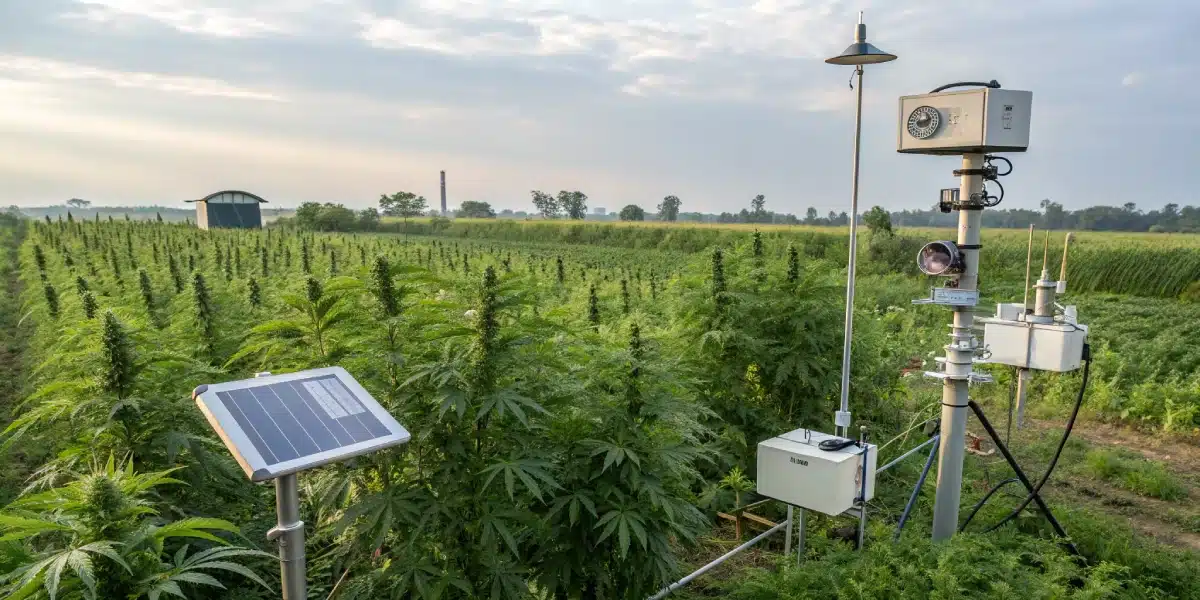
Exploring Future Trends in Outdoor Nutrient Management
The field of nutrient management is evolving rapidly, with researchers and growers experimenting with innovative formulations and delivery systems. Continuous innovation means that the best nutrients for outdoor cannabis will keep advancing, offering even better performance and efficiency in the near future.
Emerging trends such as biodegradable nutrient carriers, bio-stimulant additives, and enhanced microbial formulations are paving the way for sustainable outdoor cultivation. These advancements promise to further optimize the performance of the best outdoor cannabis nutrients.
Emerging Innovations in Nutrient Formulations
Researchers are developing nutrient products that release active ingredients more slowly and efficiently, ensuring that plants receive a consistent supply of essential minerals. Innovations include nano-encapsulated nutrients and time-release formulas, which work together with the best outdoor cannabis nutrients to maximize yield.
These new products are designed to reduce waste and minimize the environmental impact of nutrient runoff, aligning with sustainable agricultural practices. As these technologies mature, expect to see significant improvements in both yield and quality.
Sustainable Practices and Future Farming
Sustainable nutrient management remains a top priority for environmentally conscious growers. Utilizing eco-friendly formulations that combine renewable resources with high-performance ingredients supports both plant health and soil biodiversity. The best nutrients for outdoor cannabis, when developed with sustainability in mind, help ensure a thriving ecosystem.
Future trends also point towards precision agriculture, where data analytics and machine learning further refine nutrient delivery. This shift promises more tailored feeding schedules that adapt automatically to changing outdoor conditions.
FAQs
What are the signs of nutrient deficiency or overdose?
Cannabis plants may show yellowing, burnt tips, or stunted growth when experiencing nutrient issues. Regular monitoring and soil testing can help address these problems quickly.
How can I optimize the feeding schedule for outdoor cannabis?
A balanced approach works best. Use lighter feedings during the seedling stage, increase nitrogen in the vegetative phase, and shift to phosphorus and potassium during flowering.
Is it effective to combine organic and synthetic nutrients?
Yes, many growers successfully blend both to benefit from the slow-release properties of organic sources and the precision of synthetic formulas for maximum yield.



